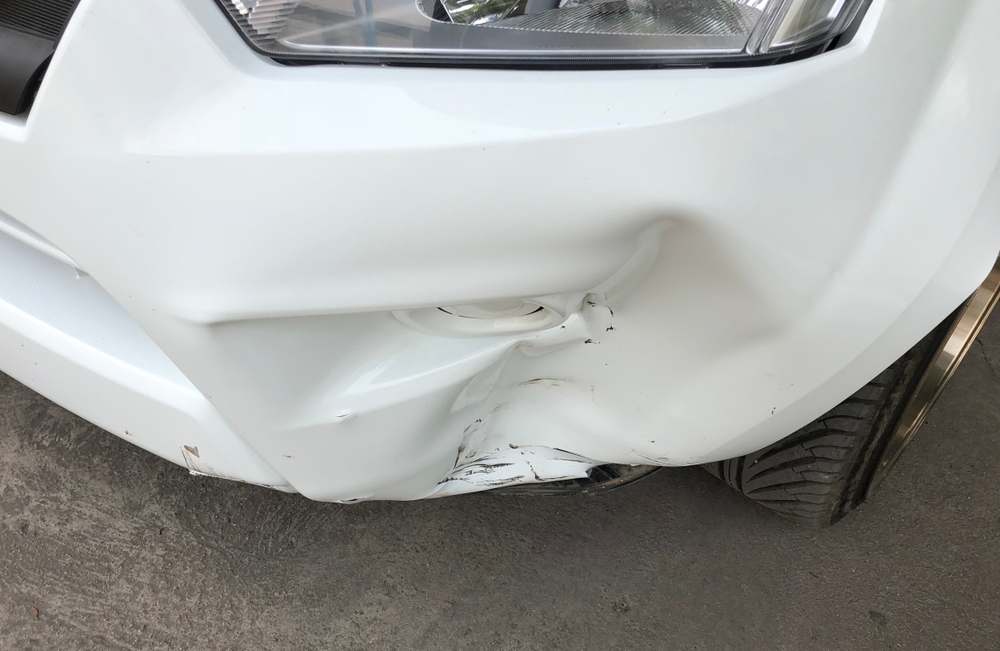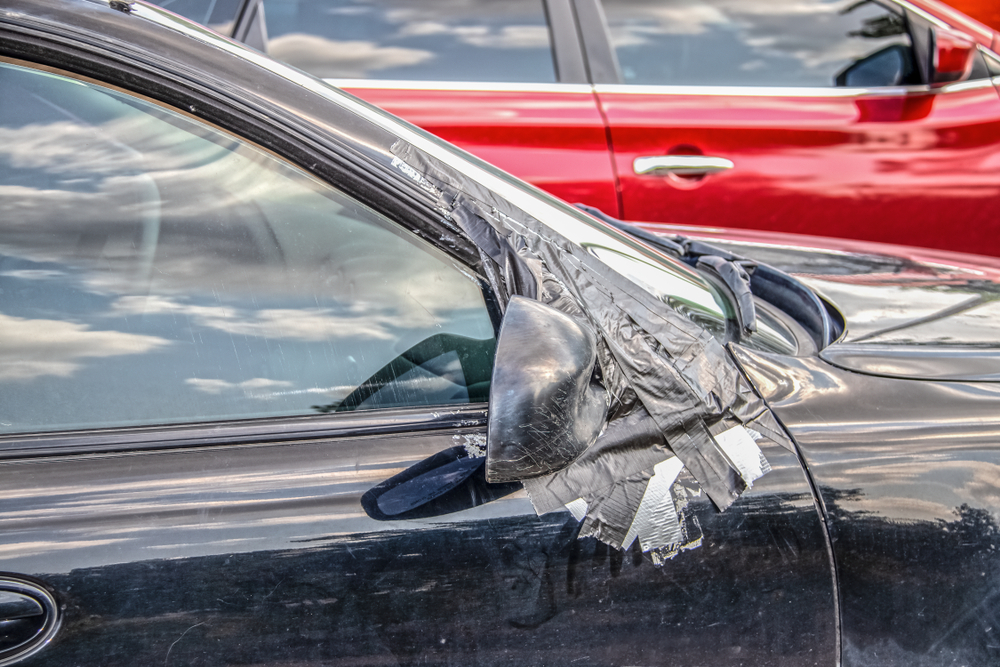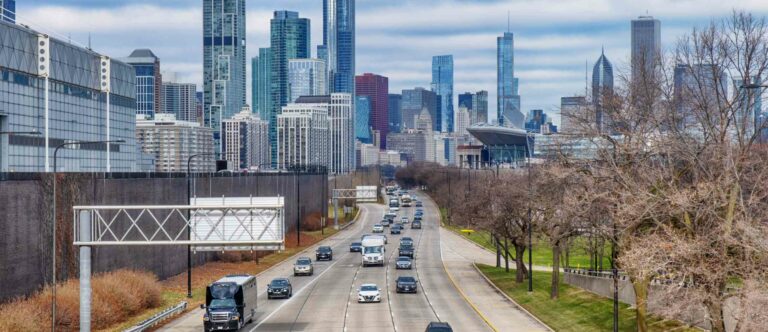You might have seen one, maybe been in one, or perhaps you’re just wondering how bad they really are compared to other types of crashes. The mental image might be two cars just kissing mirrors or swapping some paint as they try to merge into the same spot. Sounds minor, right? Not always.
While a head-on collision often takes car accident lawyer the grim title for the single most catastrophic impact, dismissing sideswipes as fender benders is a mistake. They have a nasty habit of causing more chaos and injury than you’d think, leading to complex situations, especially when it comes to figuring out who pays for the mess.
If a sideswipe accident injured you or someone you know in the Chicago area, understanding your rights is key. Give the team at Walner Law a call at (312) 410-8496 to discuss your situation.
The Anatomy of a Sideswipe: More Than Just a Scratch

So, what exactly is a sideswipe? It’s when the sides of two vehicles moving in roughly the same or opposite directions make contact. Think about merging onto I-90, changing lanes on Lake Shore Drive, or even someone drifting out of their lane on a straight road. It also includes hitting a parked car on the side.
Common scenarios leading to sideswipes include:
- Lane Changes Gone Wrong: This is the classic sideswipe cause. Someone tries to move over without properly checking their blind spot or judging the speed and distance of the car already there. According to Illinois law (625 ILCS 5/11-709), drivers need to ensure a lane change is safe before making it.
- Merging Mishaps: Entering highways or trying to merge into traffic requires careful timing and awareness. Misjudging the gap or failing to yield can easily lead to a side impact.
- Drifting: Fatigue, distraction (hello, smartphones), or driving under the influence can cause a driver to slowly drift out of their lane and into another vehicle or a stationary object like a guardrail.
- Overcorrection: Sometimes, a driver swerves to avoid one hazard only to sideswipe a vehicle in the next lane.
- Narrow Roads or Tight Maneuvers: Trying to squeeze through tight spots or navigate construction zones can also lead to sideswipes.
You might still be thinking, “Okay, but it’s just side contact.” While the initial impact might seem less forceful than a direct hit, the consequences can quickly spiral.
Why Sideswipes Pack an Unexpected Punch
Here’s why they’re deceptively hazardous:
- Loss of Control: The initial side impact can startle a driver, causing them to overcorrect their steering. This sudden jerk can send the vehicle spinning, crossing into other lanes, hitting barriers, or even rolling over. What started as a “scrape” becomes a multi-vehicle pileup or a single-car rollover disaster.
- Secondary Collisions: As mentioned, the loss of control frequently leads to secondary impacts. Your car might be pushed into oncoming traffic, a ditch, a tree, or a concrete median. These subsequent collisions add layers of damage and potential for injury.
- Side Vulnerability: Cars are designed with significant crash protection in the front (crumple zones, engine block) and rear (trunk space). The sides, however, offer much less structural defense. There’s less metal and fewer safety features between you and the impacting vehicle, especially in older cars.
- Types of Injuries: The forces involved, particularly the jarring side-to-side motion and potential secondary impacts, can cause serious harm:
- Head and Brain Injuries (TBIs): Your head can snap sideways violently or hit the window, door frame, or B-pillar, leading to concussions or more severe traumatic brain injuries.
- Neck and Spine Injuries: Whiplash isn’t just for rear-end collisions. The sudden lateral movement can strain neck muscles and ligaments. More forceful impacts or rollovers can lead to herniated discs or spinal fractures.
- Broken Bones: Arms, legs, shoulders, ribs, and hips are vulnerable, especially for occupants on the impacted side or if the vehicle rolls. Trying to brace for impact can lead to arm or wrist fractures.
- Chest Injuries: Being thrown against the door or dashboard can result in broken ribs, bruising, or internal organ damage.
- Cuts and Lacerations: Shattered windows are common in significant sideswipes, leading to deep cuts.
- Psychological Trauma: Any serious accident can cause lasting emotional distress, anxiety, or PTSD.
The potential for severe injury is real, and the crash itself is only the beginning. Figuring out who caused it is the next headache.
Are Sideswipes the Most Damaging?
Are sideswipe collisions categorically the single most damaging type of accident in every instance? Probably not. High-speed head-on collisions and T-bone crashes directly into the passenger compartment often result in more immediate, catastrophic trauma due to the direct force involved. Statistically, head-ons often carry higher fatality rates per incident.
However, that absolutely does not mean sideswipes are minor. They are uniquely dangerous because of the high potential for:
- Loss of control: Leading to unpredictable and severe secondary events.
- Rollovers: Which dramatically increase injury severity.
- Multiple Impacts: Hitting other vehicles or fixed objects.
- Significant Injuries: Due to the lack of side protection and the violent forces involved.
Data shows thousands of sideswipe crashes annually in the state, resulting in numerous fatalities and thousands of injuries, including severe, incapacitating ones. For example, the 2022 Illinois Crash Facts report listed 32 fatalities from sideswipe-same direction crashes and 24 from sideswipe-opposite direction crashes, along with thousands of injuries combined. While these numbers might be lower than some other crash types like turning or rear-end collisions overall, the potential for severe outcomes in any given sideswipe, especially at highway speeds, is significant.
So, instead of asking if they are the most damaging, perhaps the better perspective is that sideswipes are highly dangerous and notoriously complex accidents with a serious potential for causing life-altering injuries and difficult legal fights over fault and compensation. Don’t underestimate them.
Sorting Out the Mess: Fault in Illinois Sideswipe Accidents
After a sideswipe, the finger-pointing often begins. “They cut me off!” “No, they drifted into my lane!” Determining legal fault is about piecing together what actually happened, and in Illinois, it matters a lot because of the state’s approach to shared fault.
Illinois and Modified Comparative Negligence
Illinois uses a “modified comparative negligence” system, outlined in 735 ILCS 5/2-1116. Here’s the deal:
- You can recover damages (money for your injuries, vehicle repairs, lost wages, etc.) from the other driver only if you are found to be 50% or less at fault for the accident.
- If you are found partially at fault (but 50% or less), your compensation will be reduced by your percentage of fault.
- If you are found to be more than 50% at fault (51% or more), you cannot recover any damages from the other driver under Illinois law.
Who is Typically at Fault?
While every case is unique, fault in sideswipes often boils down to which driver failed to maintain their lane or execute a maneuver safely. Key factors include:
- Improper Lane Change: This is the most frequent cause. A driver who changes lanes without signaling, checking blind spots, or ensuring adequate space is usually considered negligent. (See 625 ILCS 5/11-709 regarding safe lane changes).
- Failure to Yield: When merging onto a highway or turning across lanes, drivers must yield the right-of-way to vehicles already occupying the lane (625 ILCS 5/11-901 et seq.). Failing to do so points towards fault.
- Distraction, Impairment, or Fatigue: If a driver was texting, drunk (violating 625 ILCS 5/11-501), falling asleep, or otherwise not paying attention and drifted from their lane, they are likely at fault.
- Speeding or Reckless Driving: Excessive speed makes it harder to react and control the vehicle, contributing to unsafe lane changes or drifting.
- Aggressive Driving/Road Rage: Intentionally cutting someone off or making aggressive maneuvers can lead to sideswipes.
Proving Fault
Insurance companies and lawyers investigate sideswipes using various types of evidence:
- Police Reports: While not always admissible in court as conclusive proof, the officer’s observations, diagrams, and any citations issued provide a starting point. Note that Illinois law requires reporting accidents involving injury, death, or property damage over $1,500 (or $500 if uninsured).
- Witness Statements: Independent witnesses who saw the crash can provide objective accounts.
- Vehicle Damage: The location, type, and severity of damage on both vehicles can help accident reconstructionists determine the angle and direction of impact.
- Dashcam/Traffic Camera Footage: Video evidence is often the most compelling way to show exactly what happened.
- Driver Statements: What each driver says happened (though these can be self-serving).
After the Dust Settles (But Before You Settle): Post-Accident Steps
You’ve dealt with the immediate chaos at the scene – the police report is filed, information exchanged, maybe you got checked out at the ER. Now you’re home, likely shaken up, possibly sore, and wondering what comes next. This period is about protecting your health and your potential legal claim.
- Document Everything Like a Librarian:
- Organize Scene Evidence: Gather any photos or videos you took of the vehicles, the accident location, road conditions, and any visible injuries. Keep them safe.
- Write It Down NOW: Your memory fades faster than you think. Write down every detail you recall about the accident – what you were doing, what you saw the other driver do, weather, traffic, time of day, conversations, witness info. Do it while it’s fresh.
- Create a File: Designate a folder (physical or digital) for everything related to the accident. This includes the police report exchange information, photos, your notes, medical bills, explanations of benefits (EOBs) from health insurance, receipts for prescriptions or medical devices, communications with insurance companies, and records of missed work time.
- Report to Your Own Insurance: Notify your insurance company about the accident promptly, as required by your policy. Stick to the basic facts: who, what, when, where. Avoid admitting fault or giving excessive detail before speaking with an attorney. Your insurance might cover some immediate costs depending on your policy (like MedPay, if you have it), even if the other driver was at fault.
- Tread Carefully with the Other Driver’s Insurance: You will likely get a call from the other driver’s insurance adjuster. Remember, they represent the other driver’s interests, not yours. Their job is to minimize the payout.
- Be polite but firm.
- Provide basic identification and contact information.
- Decline to give a recorded statement until you have consulted with a lawyer. Adjusters are trained to ask questions that might elicit responses damaging to your claim.
- Do not sign any documents or accept any settlement offers without legal advice. Early offers are usually lowball offers.
- Get a Thorough Medical Check-Up: Even if you felt okay at the scene or went to the ER and were released, schedule a follow-up appointment with your regular doctor. Some serious injuries, like whiplash or even certain types of brain injuries, might not show symptoms immediately. Documenting any developing pain or issues is necessary for your claim. Follow all prescribed treatment plans.
Why You Shouldn’t Go It Alone: Securing Your Claim

Trying to handle a significant sideswipe claim yourself, especially if you have injuries, is like trying to perform surgery on yourself – technically possible, but generally a bad idea. Insurance companies have teams of adjusters and lawyers whose primary goal is to protect the company’s bottom line, not to ensure you get fair compensation.
Sideswipe claims present specific challenges:
- Disputes Over Fault: As we discussed, sideswipes often lead to “he said, she said” situations. The other driver (and their insurer) will likely try to shift blame onto you to reduce or eliminate their payout under Illinois’ 51% rule.
- Proving Damages: It’s not enough to show the other driver was negligent; you must also prove the full extent of your damages. This includes current and future medical bills, lost wages, diminished earning capacity, pain and suffering, and vehicle repair/replacement costs. Quantifying these, especially future needs and non-economic damages like pain and suffering, requires experience.
- Dealing with Adjusters: Insurance adjusters are skilled negotiators trained to settle claims for the lowest possible amount. They might delay, downplay your injuries, or use statements you made against you.
- Meeting Deadlines: There are strict time limits for filing claims. In Illinois, the statute of limitations for filing a personal injury lawsuit is generally two years from the date of the accident (735 ILCS 5/13-202). If you miss this deadline, you lose your right to sue for compensation, no matter how strong your case is. (Note: Property damage claims have a five-year statute of limitations).
A car accident lawyer working on your behalf levels the playing field. They can:
- Investigate the crash thoroughly, gathering police reports, witness statements, video footage, and potentially hiring accident reconstructionists.
- Handle all communications with insurance companies, protecting you from saying something detrimental.
- Collect and organize all medical records and bills, calculate lost wages, and work with medical professionals to understand future treatment needs.
- Negotiate aggressively for a fair settlement that covers all your losses.
- File a lawsuit and represent you in court if the insurance company refuses to offer a fair settlement within the statute of limitations.
Don’t Let Your Claim Get Sideswiped: Walner Law Can Help
If you’ve been injured in a sideswipe or any other type of car accident in the Chicago area, call Walner Law today at (312) 410-8496 personal injury attorney for a consultation.


 Skip to content
Skip to content




